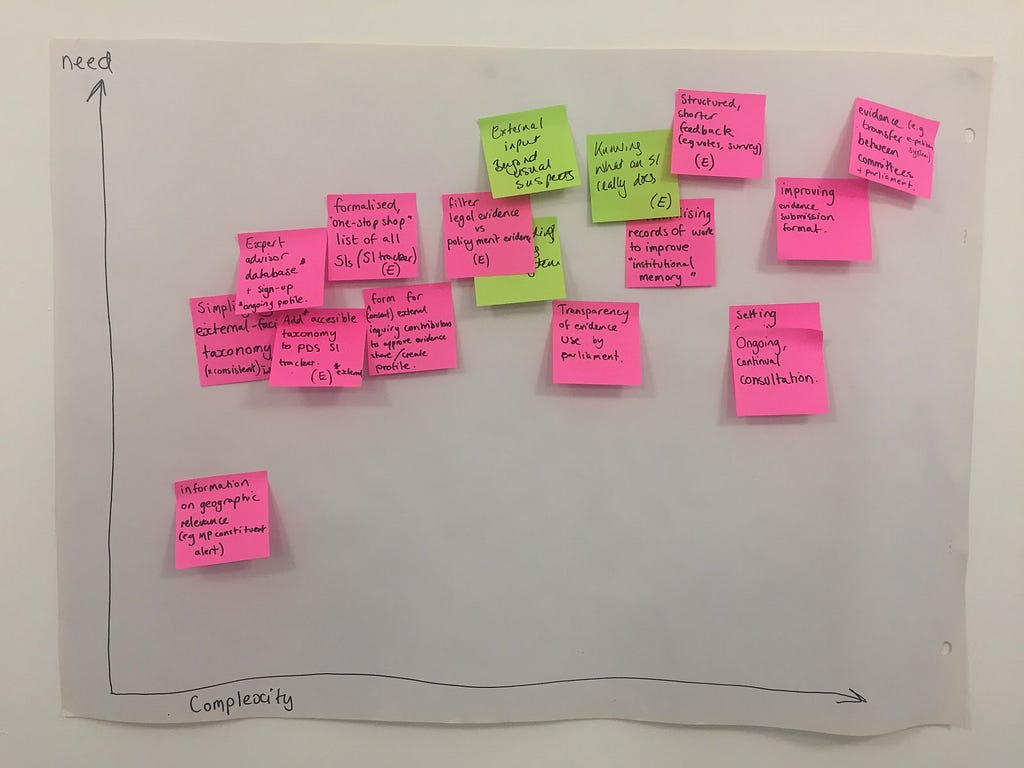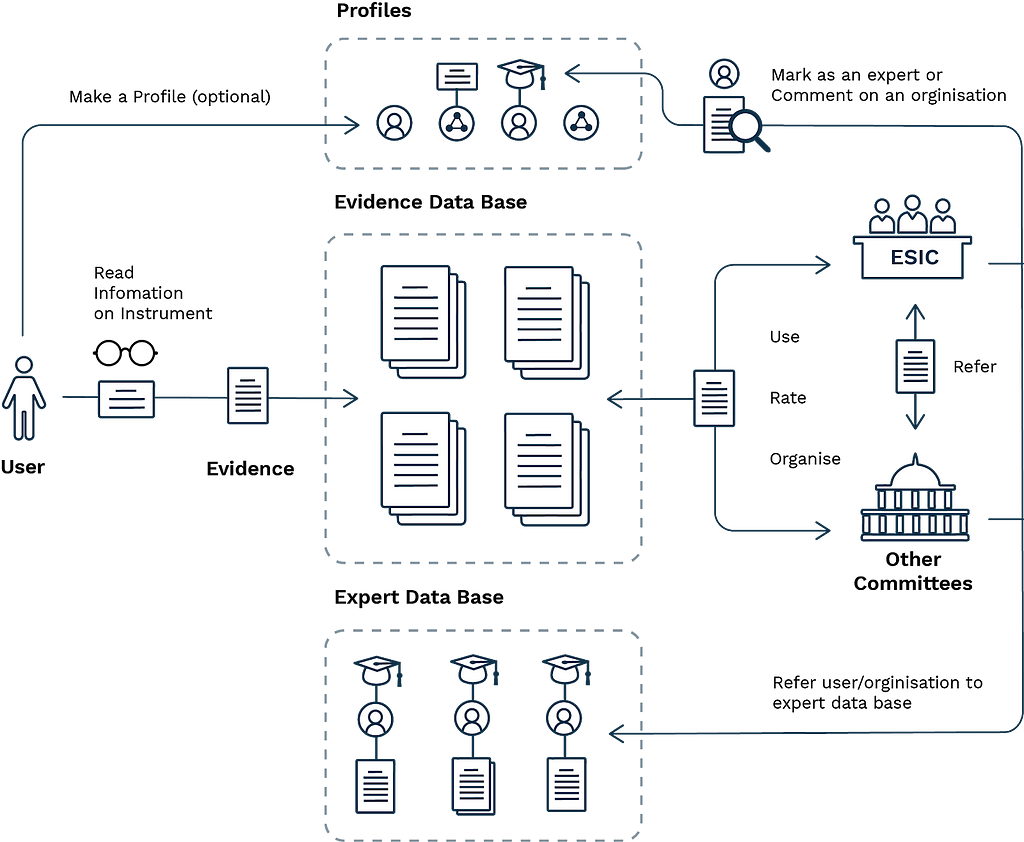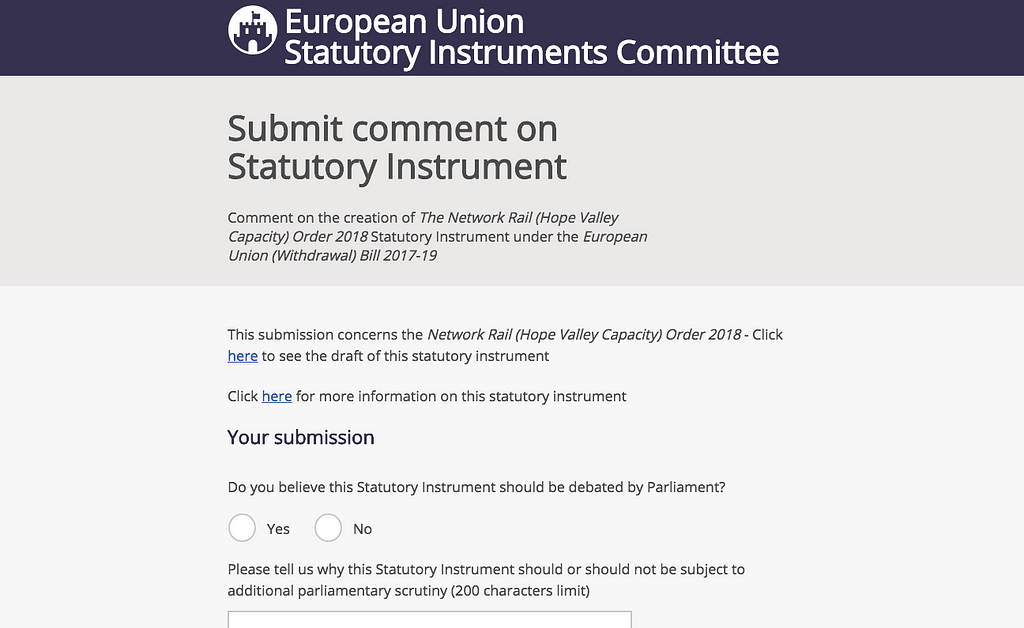Helping Parliament respond to Brexit

Early this year Doteveryone was approached by Parliament to explore how digital tools could be used to rethink the way Brexit-related legislation is scrutinised. This post discusses the issues we uncovered, solutions found, and lessons learnt along the way. Our full report, Helping Parliament respond to Brexit: Knowledge, engagement and collaboration in the digital age is available on our website.
The European Statutory Instruments Committee: A unique situation
In December 2017 the European Union Withdrawal Bill was amended to include the formation of a ‘sifting committee’ to scrutinise the details of the Bill. This committee — the European Statutory Instruments Committee (ESIC from here on in) — will examine the statutory instruments (SI) that add the finer details to the overarching principles of the Bill and recommend which of them should be debated by Parliament. With these SIs set to define the UK’s future legal landscape, the ESIC will determine what say the Parliament has in shaping it.
So far, so good. But the ESIC faces an unprecedented challenge — it will review around 1,000 SIs before the UK leaves the EU, with a lead-in time of only 10 sitting days to make a decision. This super-charged process means the committee will need new innovative ways of gathering evidence, building networks of expertise and establishing a dialogue with experts and the public.
The challenges with the current Committee system
In the lead up to the establishment of ESIC, we spoke with civil society organisations, journalists, Committee staff and civil servants to understand how these systems currently work. Some of the challenges and opportunities we uncovered were unique to the ESIC. Information on SIs currently sits across a nebulous range of websites and is presented in dense legal language, making it difficult for even those well-versed in the legislative process to understand what an SI does.
“SIs are one of the aspects of parliament that are communicated least well at the moment. Even as someone who knows their way around parliament it can still be hard to find information I need” — Esther Webber, BBC
And across all of those we spoke to, there was a consensus that conducting a meaningful consultation during the 10-day decision-period was nigh-on impossible using the conventional written inquiry approach.
Other common trends we found spoke to the wider parliamentary system: many told us of the need for Committees to shift their focus away from discrete time-limited inquiries towards a deeper, more continual dialogue with the public and organisations holding knowledge.
Committee staff also told us how they felt evidence given in formal inquiries has a tendency to come from the “usual suspects”, with external experts rarely proactively approached to contribute (although there are notable exceptions, such as the Parliamentary Commision on Banking Standards calling upon mid-ranking bank employees to give evidence).
There is also the inherently transient nature of Committees’ staffing, where Clerks move between committee and members are elected to serve finite terms. This makes it essential to intelligently record evidence received, evaluate work and build up a long-term “institutional memory” that can live on outside of the knowledge of Committee members. But evaluation of Committee work is currently piecemeal. There is potential for many to manage their work in smarter ways.
Sketching some digital solutions
In response to these challenges, we worked with designer Dan Williams and Democracy Club’s Sym Roe to sketch out some digital solutions. To distill these broad needs into a concrete workable prototype we asked two simple questions:
- How big is the need to address each issue?
- How complex would it be to develop a digital solution to do so?

The product of an afternoon brainstorm
After a flurry of post-it note activity and deliberations, we prioritised the following prototype features:
- Enabling Committee staff to build up a long-term map of key stakeholders
- Streamlining consultation questions to reduce the time needed to respond
- Transferring evidence between parliamentary groups to promote knowledge exchange
- Allowing Committee users to categorise and evaluate evidence to build up their institutional memory

Bringing these features together, we developed a simple prototype tool made of two elements:
- A public-facing SI consultation form (as shown in the screenshot below): https://streamline-submission.herokuapp.com/
- A submissions management platform for parliamentary users: https://streamline-submission.herokuapp.com/submissions

Implementing the digital solutions — it doesn’t have to be complicated
Embracing digital consultation and evidence management does not require reinventing the wheel. There are exemplars from other parliamentary systems and off-the-shelf digital tools that the ESIC and parliamentarians can use to improve their work.
The government and local authorities are already using services such as Commonplace and Citizen Space. Other countries have also been trialling tools for citizen engagement with the legislative process — the Brazilian portal “eDemocracia”, and French platform “Parlement et Citoyens are testament to how such digital approaches have been used to good effect.
Our work for the ESIC was exploratory and outlines simple but effective ways Parliament can use digital approaches to improve their work. As we approach the business end of Brexit negotiations, both ESIC and Parliament must embrace this digital ethos to ensure we can cope with the challenge.
If you enjoyed this, please click the ? button and share to help others find it! Feel free to leave a comment below.
Helping Parliament respond to Brexit was originally published in Doteveryone on Medium, where people are continuing the conversation by highlighting and responding to this story.